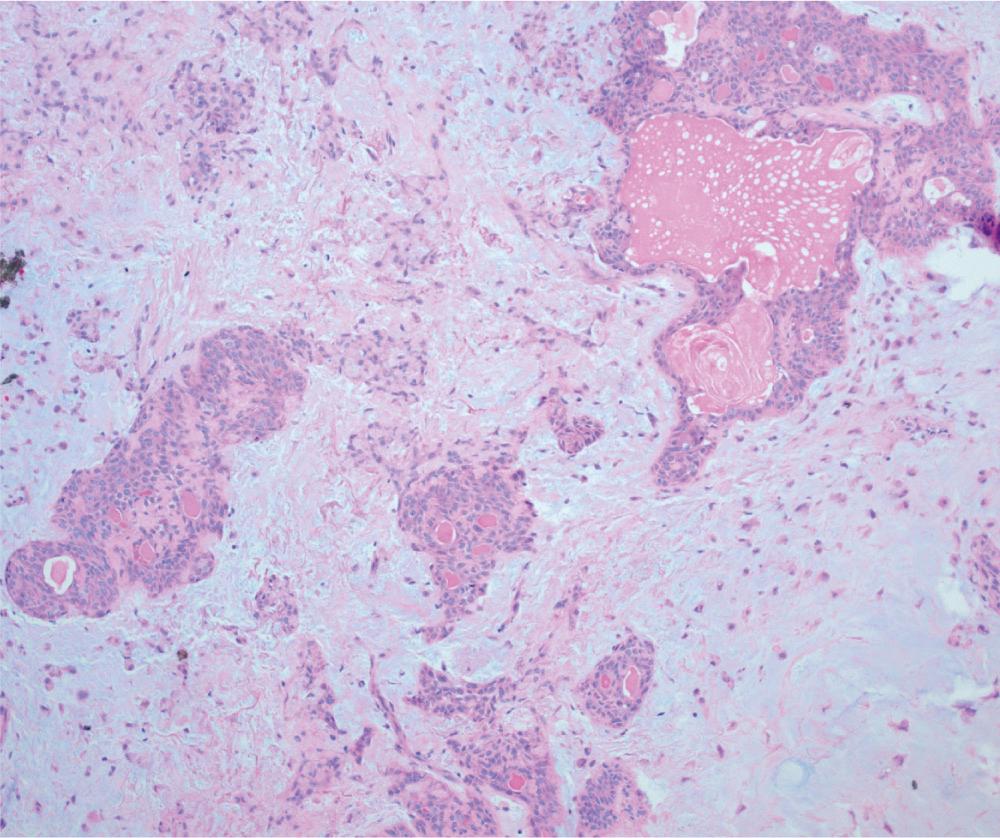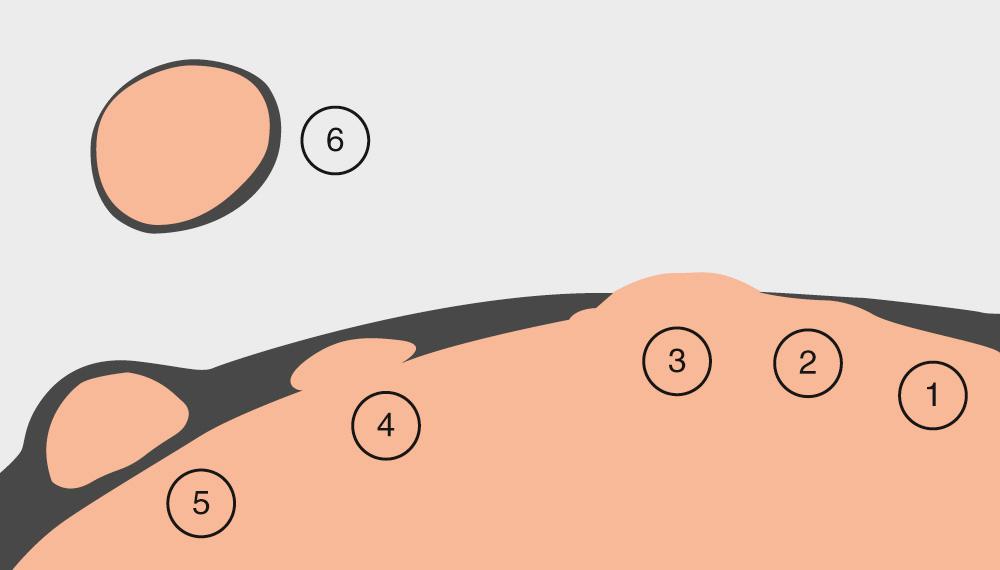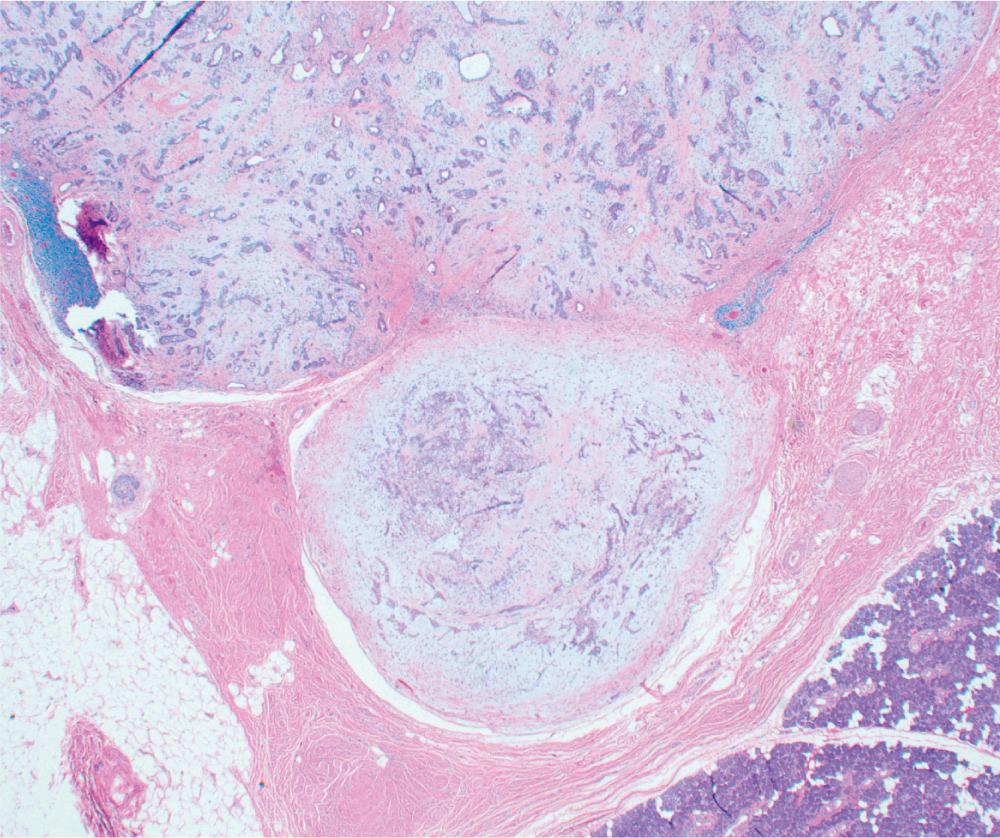Physical Address
304 North Cardinal St.
Dorchester Center, MA 02124
Pleomorphic adenoma (PA) is an enigmatic tumor with a variety of names, including adenoma multiforme and benign mixed tumor. It is one of 15 benign epithelial tumors of the salivary glands as described by the 2017 World Health Organization (WHO) classification, and the most common benign tumor of the salivary glands, comprising 45–60% of all salivary gland tumors. More than 80% of PAs occur in the parotid gland, although they can occur in any of the salivary glands, major and minor, including unusual locations such as the nasal cavity, base of the tongue, palate, and trachea. It comprises 53–68% of benign tumors in the parotid; 44–68% of submandibular tumors; and 33–43% of minor salivary gland tumors. They can occur at any age, more commonly in women between the ages of 40 and 60. The incidence is 4.29/100,000, based on a Danish population study.
In the major salivary glands, PAs appear as a painless, firm, well-demarcated and mobile mass that can gradually grow or reach a growth plateau. In the minor salivary glands, this tumor may be less mobile as in the palate or nasal cavity. Multifocality and satellite lesions have been a subject of investigation and discussion; there is great variability in these findings with the notion of multifocality being overestimated. There are also reports of monoclonality of multifocal lesions indicating separation from a primary tumor. In cases of superficial lobe PAs, satellite lesions have not been found in the deep lobe when total parotidectomy has been performed. Bilateral PA has been observed with a very low incidence.
Pleomorphic adenoma's name is derived from the presence of both epithelial and mesenchymal components in all of these tumors ( Fig. 34.1.1 ). The expression of these components can be variable giving rise to different subtypes of tumor, which include myxoid (stromal-rich), cellular (parenchyma-rich), or classic (balanced ratio myxoid:cellular). The variable presence of epithelial elements form tubular or solid structures and the stromal areas can contain myoepithelial cells along with chondroid, fibrotic, or osseous components. Glycosaminoglycans (hyaluronic acid and chondroitin sulfate) are secreted by the epithelium, which creates the myxoid and chondroid matrix that separates the cells from each other. It has been shown that the epithelial and myxoid elements are monoclonal and are therefore derived from the same precursor cell.

Understanding capsular characteristics is key in management of PAs. It is not clear whether the capsule of PA is continuously produced as the tumor grows or it is fibroconnective tissue that stretches and is compressed by the growth of tumor. The capsule of PA can be thick in some areas, thin in others and absent at times. The fibrous capsule can be penetrated or invaded by the tumor. Smaller tumors tend to have a thicker capsule.
See Fig. 34.1.2 .

Incomplete capsule describes areas where there is an absence of fibroconnective capsule and either the tumor sits adjacent to or extends into the surrounding salivary tissue or fat. Incomplete capsule is found to be present in 33–41.8% of parotid PAs, while submandibular PAs have been reported to have a much lower incidence of capsular breach. Mantsopoulos et al. saw no areas of incomplete capsule in their sample of 72 submandibular gland PAs. Minor salivary gland PAs also have incomplete capsules and have been noted to have offshoots into the capsule and in close proximity to mucous membranes. A higher incidence of incomplete capsule is noted in the myxoid PAs (28% of surface area), as compared with the cellular type (4%). The thickness of the capsule of PA varies from 5 µm to 250 µm, with myxoid PA being at the lower end (5 µm) of the thickness and cellular PA at the higher end (250 µm). Although most studies have shown the deep lobe tumors to have a thicker capsule in comparison with the superficial PAs, in their study, Zbären and Stauffer did not see a difference.
Capsule penetration occurs when tumor cells infiltrate the capsule in finger-like projections or herniations, without separation of the infiltrative process from the main tumor by a fibrous band or capsule. They are at times described as tumor buds or nodular protrusions. This is why these tumors may appear grossly to be lobular. It is more common in the cellular subtype (as it is the cellular component infiltrating the capsule). It is seen in 26% of parotid PA specimens; the size of the tumor does not affect its incidence.
Pseudopodia is PA cellular tumor nodule that is separated from the main tumor body by a fibrous band but still contained within the main tumor capsule or in contact with it ( Fig. 34.1.3 ). The incidence in the parotid is 28–54%. The incidence is much lower in submandibular PAs at 15.8%. Zbären and Stauffer found this to be more common in cellular and classic subtypes, while others did not find a correlation. There is no relation between the size of the tumor and presence of pseudopodia.

Become a Clinical Tree membership for Full access and enjoy Unlimited articles
If you are a member. Log in here